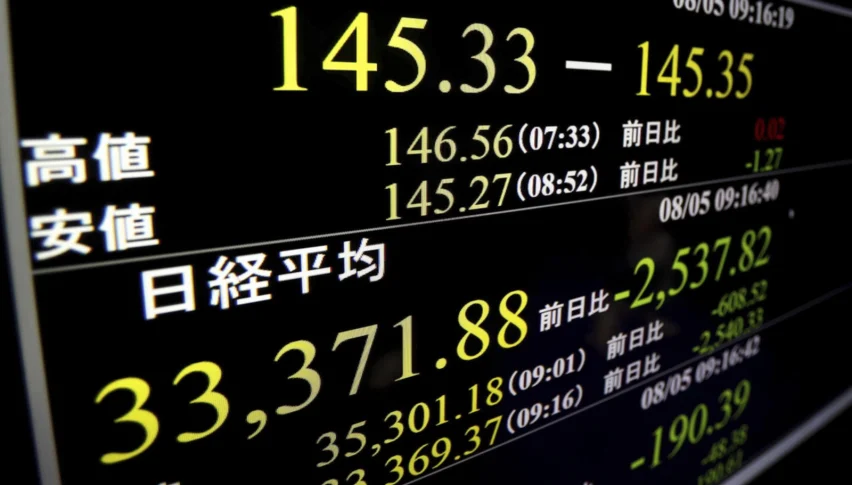Nikkei Tests 2025 Low with Asian Markets on Edge Despite Stable Chinese Manufacturing
Nikkei is facing the lowest levels since August 2024, as soft risk sentiment keeps stock market trending lower.

Live NIKKEI225 Chart
Nikkei is facing the lowest levels since August 2024, as soft risk sentiment keeps stock market trending lower.
Nikkei 225 Faces Continued Pressure in 2025
The Nikkei 225 has enjoyed a long-term uptrend, supported by key moving averages, but 2025 has brought renewed challenges. Last summer, the index saw significant volatility after the Japanese yen surged by 20 cents, briefly dragging the market lower before a strong recovery. The 50-week SMA acted as a firm support level, helping maintain the bullish trend. However, as 2025 unfolds, Japan’s stock market is facing increased selling pressure due to a combination of the Bank of Japan’s tightening policies and worsening risk sentiment tied to global trade tariffs.
Nikkei Chart Daily – Breaking the 100 SMA
This shift has caused the Nikkei to break below key support, leading to a deeper correction. The 100-week SMA around 36,000 points provided a strong support zone, triggering a brief rebound. However, the index has struggled to sustain momentum, and volatility remains high as investors weigh the broader economic landscape.
Markets Lower to Start the Week, Ahead of U.S. Tariff Decision
Global markets remain unsettled as investors brace for Wednesday’s tariff announcement. While the new trade duties take center stage, speculation and political debates before and after the decision are expected to fuel volatility.
President Trump has urged his administration to take a tougher stance, pushing for broader tariff measures with higher rates on more countries. Advisors have discussed imposing global tariffs of up to 20%, potentially impacting most U.S. trading partners. A reciprocal strategy is also on the table, targeting nations with which the U.S. runs a trade deficit. An administration official confirmed that Trump is determined to implement these measures, aiming to correct what he views as unfair trade practices.
China’s March PMI Data Signals Modest Growth Amid Export Weakness
Manufacturing PMI rose to 50.5, marking the fastest expansion in a year.
In line with expectations (50.5) and slightly above the prior reading (50.4).
Production index increased to 50.5 from 50.0 in February.
New order index improved to 51.8, up from 51.1 in February.
New export order index remained in contraction at 49.0 for the 11th consecutive month, highlighting continued weakness in external demand.
Non-Manufacturing PMI climbed to 50.8, exceeding expectations (50.5) and the previous reading (50.4).
Composite PMI rose to 51.4, up from 51.1 in February, indicating a modest expansion across both manufacturing and services sectors.
China’s latest PMI figures suggest steady economic activity, with manufacturing output and domestic demand showing modest improvements. However, the ongoing contraction in export orders underscores persistent external demand challenges. While the overall economy remains in expansion, global trade uncertainties could continue to weigh on growth momentum.
Chinese Data and Trade Developments Offer Little Relief
Despite a stable Chinese manufacturing sector and a measured response to U.S. trade tariffs, Asian equities have been unable to regain strength. Recent manufacturing data out of China showed resilience, with factory activity holding steady and avoiding contraction, offering some optimism for the region. However, this was not enough to counteract the broader concerns surrounding global trade policies.
Japan’s stock market, along with other major Asian indices, remains vulnerable as investors monitor the effects of rising interest rates and ongoing trade tensions. If sentiment continues to deteriorate, further downside risks could emerge, testing lower support levels in the coming weeks.
Nikkei 225 Live Chart
- Check out our free forex signals
- Follow the top economic events on FX Leaders economic calendar
- Trade better, discover more Forex Trading Strategies
- Open a FREE Trading Account





